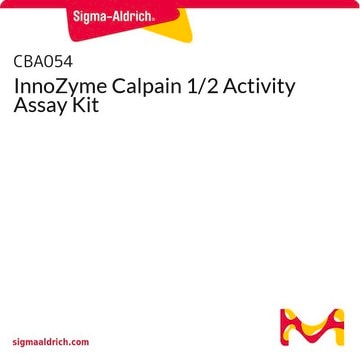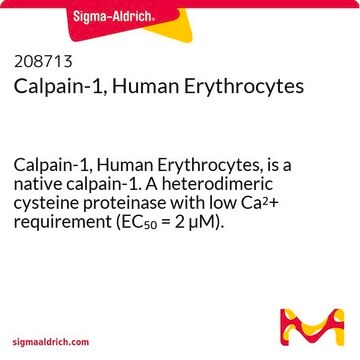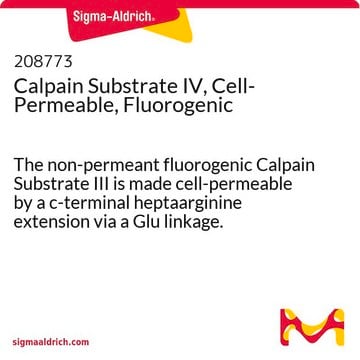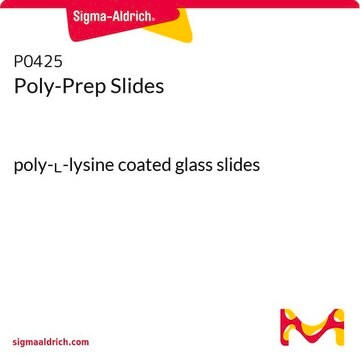QIA120
Calpain Activity Assay Kit, Fluorogenic
About This Item
Produits recommandés
Utilisation
sufficient for 96 tests
Niveau de qualité
Conditionnement
pkg of 1 96-well plate(s)
Fabricant/nom de marque
Calbiochem®
Conditions de stockage
OK to freeze
avoid repeated freeze/thaw cycles
protect from light
Entrée
sample type serum
sample type plasma
sample type cell lysate
Méthode de détection
fluorometric
Conditions d'expédition
wet ice
Description générale
Composants
Avertissement
Caractéristiques
Notes préparatoires
Stockage et stabilité
Remarque sur l'analyse
Calpain 1
Autres remarques
Glading, A., et al. 2000. J. Biol. Chem.275, 23908.
Ishikara, I., et al. 2000. Neurosci. Lett.279, 97.
Nakagawa, T. and Yuan, J. 2000. J. Cell Biol.150, 887.
Pariat, M., et al. 2000. Biochem. J.345, 129.
Pink, J.J., et al. 2000.Exp. Cell Res.255, 144.
Wang, K.K. 2000. Trends Neurosci.23, 20.
Reddy, R.K., et al. 1999. J. Biol. Chem.274, 28476.
Leist, M., et al. 1998. Mol. Pharmacol.54, 789.
Melloni, E., et al. 1998. J. Biol. Chem.273, 12827.
Villa, P.G., et al. 1998. J. Cell Sci.111, 713.
Wood, D.E., et al. 1998. Oncogene17, 1069.
Kubbutat, M.H. and Vousden, K.H. 1997. Mol. Cell Biol.17, 460.
Molinari, M. and Carafoli, E. 1997. J. Membr. Biol.156, 1.
Sorimachi, H., et al. 1997. Biochem. J.328, 721.
Squier, M.K. and Cohen, J.J. 1997. J. Immunol.158, 3690.
Aoki, K., et al. 1986. FEBS Lett.205, 313.
Ohno, S., et al. 1986. Nucleic Acid Res.14, 5559.
Informations légales
Mention d'avertissement
Danger
Mentions de danger
Conseils de prudence
Classification des risques
Repr. 1B
Code de la classe de stockage
6.1C - Combustible acute toxic Cat.3 / toxic compounds or compounds which causing chronic effects
Certificats d'analyse (COA)
Recherchez un Certificats d'analyse (COA) en saisissant le numéro de lot du produit. Les numéros de lot figurent sur l'étiquette du produit après les mots "Lot" ou "Batch".
Déjà en possession de ce produit ?
Retrouvez la documentation relative aux produits que vous avez récemment achetés dans la Bibliothèque de documents.
Notre équipe de scientifiques dispose d'une expérience dans tous les secteurs de la recherche, notamment en sciences de la vie, science des matériaux, synthèse chimique, chromatographie, analyse et dans de nombreux autres domaines..
Contacter notre Service technique









